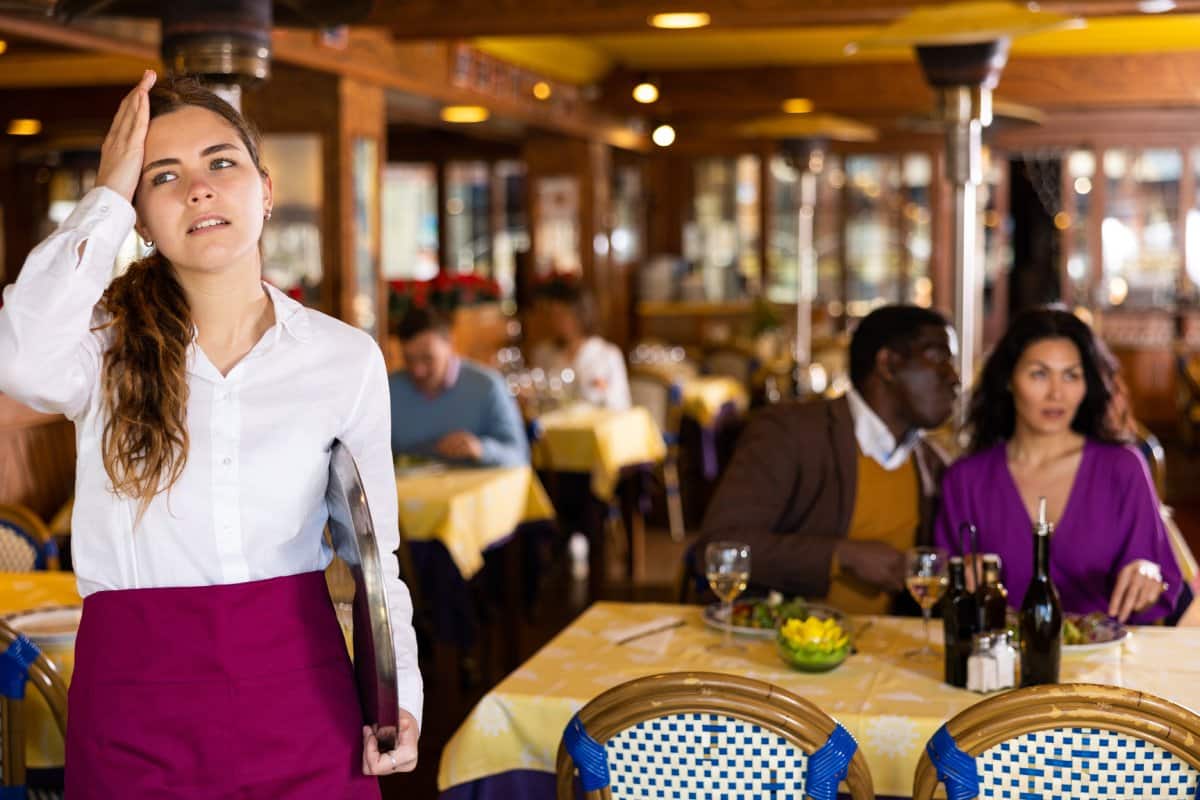When American tourists step into a restaurant abroad, there’s often a palpable shift among the staff. But what exactly prompts that uneasy glance from your server? Ever wondered why your dining habits might be stirring the pot overseas?
1. Asking for Ketchup with Everything

From pasta to paella, some Americans love to drench their dishes in ketchup. Waitstaff might cringe seeing a classic cuisine modified to such an extent.
2. Expecting Free Refills

In many countries, refills aren’t free or common. When tourists ask for one, it can lead to a mix-up or a mild shock when the bill arrives.
3. Misuse of Cutlery

Using a fork like a shovel or a knife as a spear can make servers wince. Traditional etiquette varies widely, but misuse often stands out.
4. Tipping Confusion

In the U.S., tipping generously is customary, but in some countries, it’s seen as unnecessary or even insulting. American tourists often leave tips when it’s culturally inappropriate.
5. Loud Conversations

Americans are stereotypically louder than other tourists. This can disrupt the ambiance of a place that prides itself on a quiet, refined dining experience.
6. Ignoring Local Cuisine

Servers might be disappointed when tourists bypass local specialties for more familiar dishes like burgers or pizza, missing out on the authentic flavors.
7. Requesting “American” Coffee

Asking for a regular “American” coffee in regions known for their specific coffee culture—like Italy or Colombia—can be slightly embarrassing for the server.
8. Frequent Seating Requests

Changing tables multiple times or insisting on a specific seat without a reservation can disrupt the flow of service and annoy the staff.
9. Complicated Orders

Customizing a dish excessively, especially in a busy restaurant, complicates the kitchen’s workflow and increases the chance for errors.
10. Insistence on Ice

In many European countries, drinks are served with little to no ice. Americans insisting on a full cup of ice can seem odd and be logistically challenging.
11. Using Phones at the Table

Using phones excessively, especially to talk while ordering or eating, can be seen as rude by staff who value engagement and manners.
12. Misunderstanding Portion Sizes

Complaining about smaller portion sizes is common among American tourists, which can be frustrating for servers who are accustomed to local norms.
13. Allergies and Dietary Restrictions

While valid, the high volume of dietary requests compared to local patrons can be overwhelming if the cuisine isn’t typically catered to such needs.
14. Impatience with Service Speed

In many places, dining is meant to be a leisurely experience. Americans often expect quick service, which can clash with local dining customs.
15. Asking for Separate Checks

In many countries, splitting the bill is uncommon and can complicate payment processes, leading to awkward moments at the end of the meal.
16. Over-enthusiastic Palate Descriptions

Describing every taste and texture can be perceived as pretentious or odd by servers, especially if it disrupts other guests.
17. Inappropriate Dress

Wearing casual or beach attire in a high-end restaurant can be frowned upon, making tourists stick out uncomfortably.
18. Ignoring the Host

Walking in and seating oneself without speaking to the host is a faux pas in many cultures, leading to logistical issues and a poor start to the dining experience.
19. Mispronouncing Dish Names

While an honest mistake, consistently mispronouncing menu items can be grating for waitstaff, especially in regions proud of their culinary heritage.
20. Overuse of Credit Cards

In some places, cash is king. Using credit cards for small tabs can slow down transactions and sometimes isn’t even possible.
21. Excessive PDA

Public displays of affection are not as acceptable in some cultures as they are in the United States, which can make other diners—and staff—uncomfortable.
22. Assuming Everyone Speaks English

Expecting everyone to speak English without attempting the local language can come off as disrespectful, even if that’s not the intent.
Final Thoughts

Understanding and respecting local customs and practices can go a long way in enhancing your dining experiences abroad. It’s not just about enjoying the meal, but also about appreciating the culture that comes with it. Being mindful of these points can help ensure that your adventures into new culinary territories are delightful, respectful, and full of genuine discovery.
The post 22 Reasons a Waitress Cringes When an American Tourist Walks In In first appeared on Mama Say What?!
Featured Image Credit: Shutterstock / BearFotos.
For transparency, this content was partly developed with AI assistance and carefully curated by an experienced editor to be informative and ensure accuracy.





